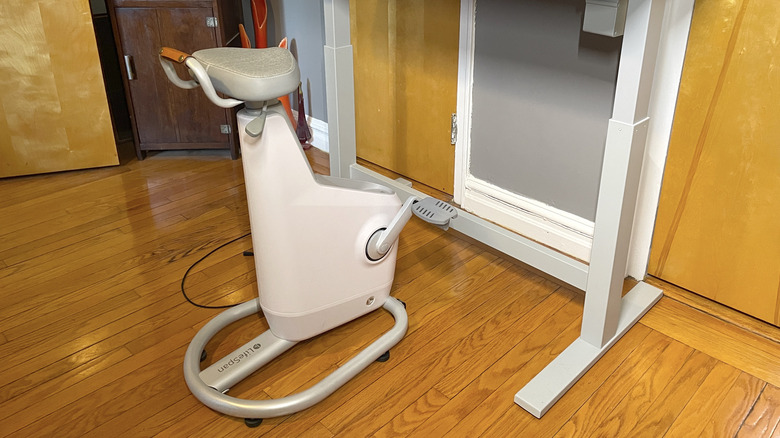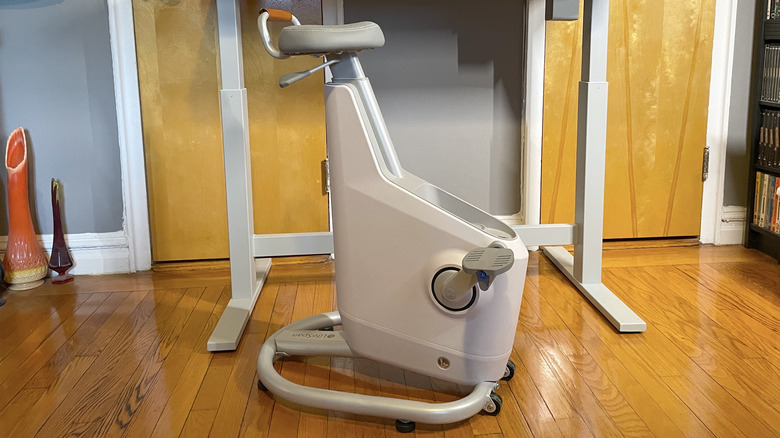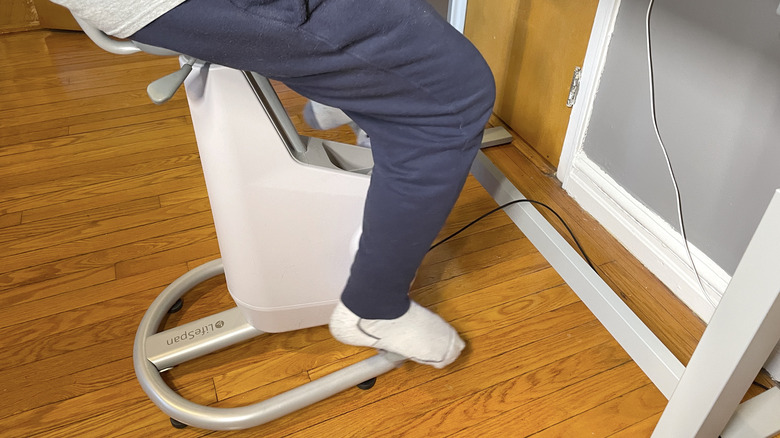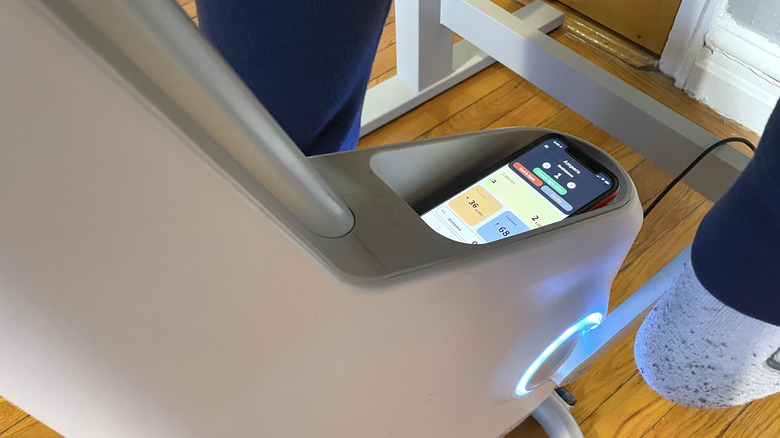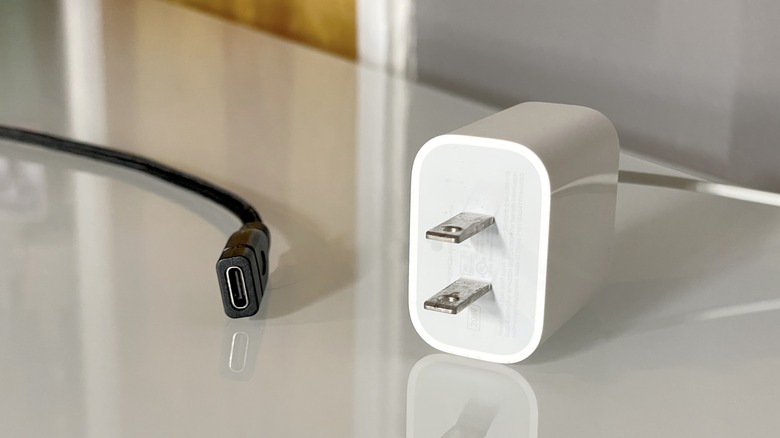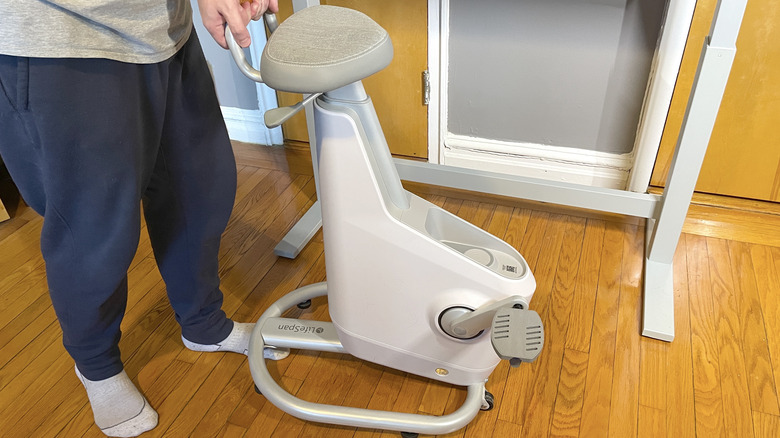LifeSpan Ampera Office Bike Review: Workout First, Charge Second
- An effective way to exercise and charge your devices
- Easy to set up and start using
- Lots of useful metrics tracked via the app
- Sits too high for a typical desk or someone with shorter legs
- Charging requires a lot of steady pedaling
- Included adapter only covers USB-C connectors
We may receive a commission on purchases made from links.
With all the time some of us spend at our desks these days — particularly when working from home — making an effort (or just remembering) to exercise can often be a challenge. There's certainly no shortage of fitness routines you can perform at home, or equipment like stationary bikes to help you keep in shape, but those solutions may not work out during a busy day. Like the kind of day where you're so focused on the task at hand, you don't realize it's well past lunchtime and you haven't eaten yet. So why not combine work and workouts?
The Ampera Office Bike from LifeSpan is designed to work with most standing desks (we'll get to that) as a way to get you burning calories without having to step away from your work, but will also charge your important electronic devices. All you have to do is plug something like your laptop into the included charging cable, then start pedaling. Simple. However, if you expect the Ampera Office Bike to act as a charging station with some mild cardio-centric benefits (or a self-contained desk and bike combo), you might end up disappointed.
LifeSpan provided an Ampera Office Bike for the purposes of this review.
A self-contained beast
Something that came as a surprise with the Ampera Office Bike was its size. The shipping box is pretty sizable, but it's not just because of a thorough amount of padding. Calling the device itself "big" isn't exactly accurate either, as it's unquestionably smaller and more compact (approximately 31 by 23 by 17 inches) than a typical exercise bike.
However, its dimensions are still a little tricky to account for if you have a smaller living space. It's also pretty heavy, though thankfully it has a pair of wheels at the front of the base that make it fairly easy to tilt and roll. It's not too difficult to roll it off to the side or into a corner if you need to get it out of the way for some reason, but it's also not something you're going to be able to tuck under a bed or easily store in a closet. Much like a regular exercise bike, this is something you're probably going to have to get used to sharing your space with rather than hiding it away when it's not in use.
Bigger size problems
What's less dependent on your home's dimensions or available storage solutions is the minimum height. Standing roughly 31 inches from the floor to the top of the seat at its lowest positioning means you won't be able to use the Ampera Office Bike with anything lower than a standing desk.
In fairness to LifeSpan, the need for a taller desk is made clear in the promotional imagery or could be sussed out just by looking at its measurements. However, even at its shortest, it might not work well for the average person if their legs are a little shorter. The estimated height range is between five feet and six and a half feet, which seems reasonable and does cover the current estimated range for most adults (about 5.3 feet to 5.8 feet).
In testing, this wasn't exactly the case. A taller person (around 6 feet, 1 inch) had no problems pedaling the Ampera Office Bike, but someone standing 5 feet 4 inches tall could barely complete a full rotation on the pedals — at least not without assuming more of a standing position on the bike. This may not technically make it unusable for some folks who fall within that rough average height, but it functionally may as well be. Especially if the plan is to use it while sitting at a desk since actually sitting while pedaling doesn't work that well if your legs aren't long enough. And unfortunately, this is with the seat as low as it can go.
Working it
Setting up the Ampera Office Bike is very simple, even though the assembly instructions aren't included in the box (but they are online), and you can start your charging workout as soon as you find something to plug into the included USB-C cable. However, if you want to view and keep track of your exercise stats or adjust resistances, you're going to need to sync it up with the LifeSpan app, too.
Once you're ready all you have to do is pedal, with your RPMs being converted into energy that passes through the charging cable and into whatever device you've connected to it. The trick, though, is consistency. You won't have much luck if you can't maintain a steady pace, and LifeSpan recommends a minimum of 60 RPM for any meaningful results. It's not a difficult pace to maintain — heck, even a somewhat out-of-shape tester was able to manage an average around 75 to 80 RPM — but you do have to keep going and keep it above 60 RPM to successfully charge anything.
Fortunately, it's really easy to keep track of all these numbers if you use the official app, which will display things like RPM and power output, along with more typical exercise metrics such as calories, distance, and overall time. The somewhat bizarre caveat is that, since the bike is cordless and generates its own power, it's effectively always off until you start pedaling — meaning you have to start using it in order to connect the two.
Charge your stuff
It's possible to charge more than one thing at a time with the Ampera Office Bike, but one of those devices has to be a smartphone with wireless charging. There's a handy Qi Wireless charging spot on the front of the bike, above the pedals but below the seat, where you can place your phone while you do your thing. The wireless charging works better if you don't have a case on your phone, and the positioning is too awkward to be able to place or remove your phone while pedaling, but it does make for a good way to keep your phone powered while using the app to keep track of your various stats.
The included USB-C charging cable (USB-C in, specifically) is what you'll be using to charge everything else, and it's a useful enough length that you won't have to worry about it reaching most devices on a desk in front of you. That said, it only covers USB-C, so any devices that require USB-A, USB-B, or universal AC will require a separate adapter.
If you can keep a steady pace though, you'll start to see battery display changes within a few minutes. Charging rates may vary from person to person based on how fast they can pedal at a consistent level, but in testing a MacBook, iPhone, and Nintendo Switch (both while in use and when resting or sleeping) at a pace of around 70 to 80 RPM, results were always around 1% of charge every four or five minutes.
Ampera Office Bike verdict
Don't think of the LifeSpan Ampera Office Bike as a device you can use to charge your other devices — that also provides a fitness benefit. It's much more an exercise bike first and foremost, with the added benefit of being able to charge other devices as you use it. The workout is the main point, and the generated wattage is a secondary bonus.
That and it does have its limitations. Not everyone is going to be able to use it (or at least use it well) due to some unfortunate height adjustment limitations. You won't be able to charge multiple devices at once (save a smartphone via wireless and one other piece of hardware via cable), and what you can charge with the included cable is limited to USB-C out of the box.
But as long as you know what to expect, and assuming you're in the market for a $999 exercise bike you can use with a standing desk, there's still plenty to get from it. Stat tracking with the app is a useful way to see how you and your plugged-in devices are doing. You can fairly easily increase or decrease pedaling resistances for a tougher or easier workout. It can be rolled out of the way without much problem.
You can find the LifeSpan Ampera Office Bike on Amazon right now for around $850, or on LifeSpan Fitness for around $800, depending on how long each sale lasts.
